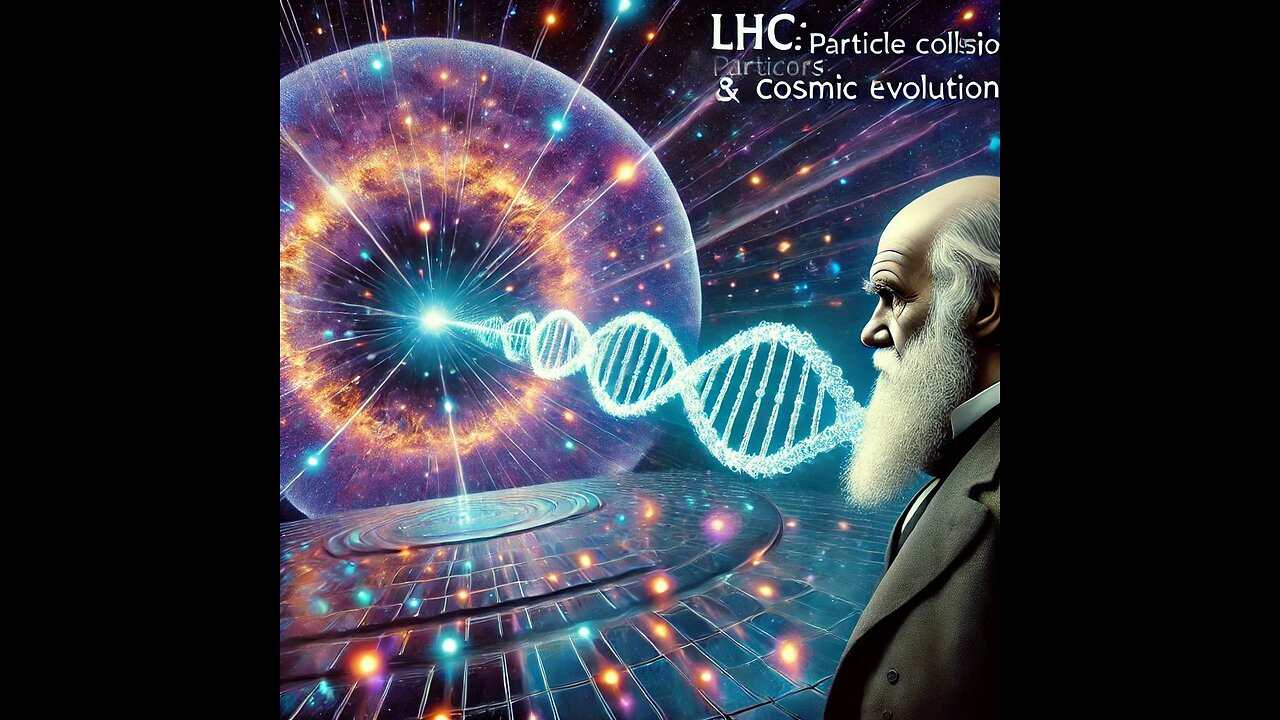Premium Only Content

Atoms as Replicators, Darwinian Universal ep7
Darwinian Universal is a cosmology and physics theory that aims to provide a comprehensive explanation of the universe's origin and evolution, as well as the fundamental principles governing its behaviour. This theory incorporates elements of natural selection and evolution, as well as concepts from various fields of physics, such as quantum mechanics and general relativity.
The Darwinian Universal theory posits that the universe is a dynamic and evolving system, in which structures and processes emerge and change over time in a manner analogous to biological evolution. This includes the formation of galaxies, stars, planets, atoms and the emergence of life itself.
The theory also proposes that the fundamental constants and laws of physics may not be fixed and unchanging but could have evolved and fine-tuned over time through a process of natural selection. This could potentially explain the apparent fine-tuning of the universe, as well as the emergence of complex structures and phenomena.
The Large Hadron Collider operates at the cutting edge of our understanding, accelerating particles to incredible speeds and colliding them with precision. These high-energy collisions result in a cascade of daughter particles, even generating new hydrogen atoms. While primarily designed to probe the fundamental forces of nature, this process opens the door to a speculative question: could the mechanisms observed in the LHC reflect a deeper, Darwinian process at work in the universe?
In biology, parent organisms produce offspring, passing on genetic traits from one generation to the next. Could the LHC’s parent particles, giving rise to daughter particles, hint at a similar form of inheritance on an atomic scale? The proximity of these particles in high-energy collisions raises the possibility that information—whether in the form of atomic characteristics or behaviors—might be passed down, just as genetic information is transmitted in organisms.
This idea suggests that atomic traits could be encoded in a manner analogous to DNA in biology. Atoms, the building blocks of life and technology, are remarkably proficient at storing and transmitting information. From biochemical processes to data systems, atomic properties govern how information is conveyed. This raises the possibility that matter itself is an evolved, information-rich entity, capable of storing processing and transmitting information—a key element of Darwinian evolution.
If matter has evolved to be adept at processing information, this may not be a coincidence but a consequence of deeper evolutionary dynamics shaping the physical world.
The processes we observe in the LHC may not be confined to the laboratory. Quasars—among the brightest and most energetic phenomena in the universe—show striking parallels to the LHC’s particle collisions. These cosmic giants, located at the centers of galaxies, exhibit near-light speed acceleration and collision of matter within their accretion disks, with jets then dispersing matter into intergalactic space. In this sense, quasars could be seen as nature’s "atomic foundries," where matter is continuously collided, created, and dispersed in a process akin to the generational continuity of life.
If quasars act as cosmic replicators, dispersing matter in a way that mirrors biological replication, then principles of adaptation and optimization may extend far beyond biology. Just as Darwinian evolution refines organisms through selection pressures, could cosmic environments like quasars be refining atomic structures, shaping the properties of matter in the universe?
The existence of atomic replication processes in the LHC and potentially in quasars invites exploration of Darwinian evolution in physics and cosmology. While aspects of this idea remain provisional, the parallels between particle interactions and biological evolution offer a compelling path for exploration.
Matter genesis also occurs at lower energy levels. An example is the creation of electron-positron pairs during lightning strikes. The created electrons persist, while positrons—the antimatter counterparts—annihilate with passerby electrons in earth’s atmosphere, showcasing a cyclic process of birth, life, and death in matter.
This regeneration of particles, even in modest conditions, supports the Darwinian principles explored in this theory. The self-propagation and recycling of matter, akin to biological processes, suggest that such mechanisms may operate at fundamental levels of the physical world.
If the physical universe operates under similar evolutionary principles as biological systems, then adaptation, optimization, and inheritance may be woven into the very fabric of the cosmos.
-
 LIVE
LIVE
StoneMountain64
37 minutes agoArc Raiders EXPEDITION Money Making is Insane
100 watching -
 LIVE
LIVE
Side Scrollers Podcast
3 hours agoTwitch has a SERIOUS Problem + Leaflit’s VIRAL Interview + More | Side Scrollers
814 watching -
 LIVE
LIVE
Barry Cunningham
17 hours agoBREAKING NEWS: President Trump Hosts Cabinet Meeting & Makes MAJOR Announcement!
1,684 watching -
![Wall Street CRASHED Bitcoin DOWN To $80,000!! [Heres Proof] | EP 1389](https://1a-1791.com/video/fww1/dc/s8/1/G/E/S/E/GESEz.0kob-small-Wall-Street-CRASHED-Bitcoin.jpg) LIVE
LIVE
Simply Bitcoin
1 hour agoWall Street CRASHED Bitcoin DOWN To $80,000!! [Heres Proof] | EP 1389
144 watching -

Timcast
1 hour agoMedia MELTS DOWN Over New Media Pentagon Takeover
92.5K30 -
 2:04:40
2:04:40
Steven Crowder
4 hours agoWar Criminal Pete Hegseth: Debunking the Media's Newest BS Smear Campaign
352K218 -
 59:57
59:57
The Rubin Report
3 hours agoPress Gasps When Told Trump’s Brutal Plan for Venezuela
29.9K72 -
 LIVE
LIVE
Benny Johnson
3 hours ago🚨Trump Cabinet Meeting LIVE Now in White House As Somali Fraud EXPOSED, Third World Deportations
5,020 watching -
 LIVE
LIVE
Sean Unpaved
1 hour agoAbdul Carter BENCHED In First Quarter AGAIN | UNPAVED
65 watching -
 LIVE
LIVE
The White House
3 hours agoPresident Trump Hosts a Cabinet Meeting, Dec. 2, 2025
1,887 watching